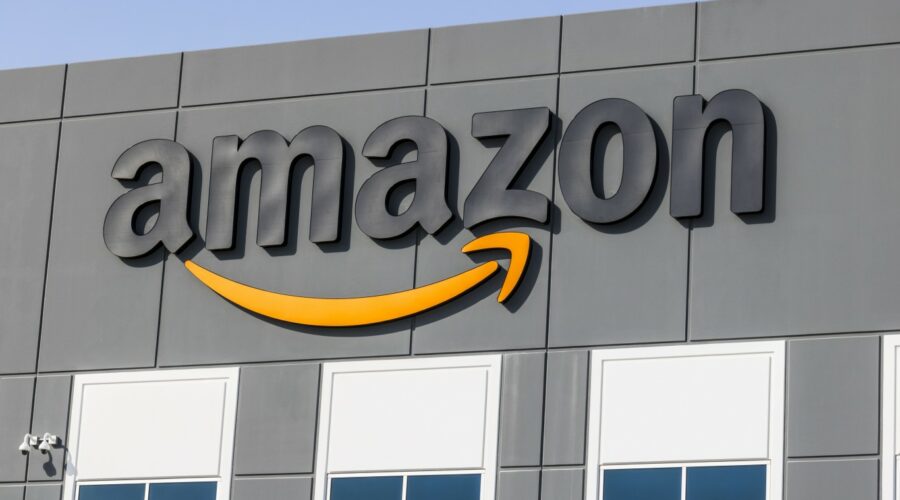Amazon NFT Rumors at All-Time High
As serious rumors go, multiple sources claim that the world’s largest e-commerce enterprise will start offering NFTs. If Amazon goes through with it, we could see the ultimate mainstreaming of digital assets and associated Web3 ecosystems.
Amazon NFT Rumor Mill in Full Swing
At the end of January, a report surfaced that Amazon is in the early stages of launching NFTs as a part of Web3 gaming initiative. Bolstering that report, a specialized Web3 media outlet, TheBigWhale, referred to insider sources that Amazon is poised to launch Amazon Digital Marketplace on April 24.
Apparently, Amazon was already supposed to launch it, but there was a delay due to the FTX fallout. Outside of the Web3 initiative itself, Amazon’s project stands out for its “real-world assets” angle. It would tie NFTs to physical products, likely reserved for Amazon Prime customers.
While it is still uncertain if rumors are true or if the Amazon Digital Marketplace will launch in April or May, there is a more pressing question to explore. What is the implication for the wider crypto ecosystem, especially during the ‘crypto winter’?
Amazon Web3 Entrance Not Surprising
Even with zero rumors floating about, Amazon entering the digital asset arena would surprise no one. After all, Amazon is not a mere e-commerce enterprise with a $1 trillion market cap. The company is a conglomerate of multiple industries that feed into each other:
- Content provider through Amazon Prime Video and Amazon Studios, but also through acquired platforms like MGM Studios, Twitch, Audible, IMDb, and others.
- Physical retail chain, further boosted after acquiring Whole Foods and launching Amazon Go stores, having increased net sales by +9% in Q4 2022, at $514 billion, compared to Q4 ‘21.
- Advertising platform, having increased ad revenue by +23% in Q4 ‘22, at $11.6 billion. Amazon’s ad revenue directly feeds into its e-commerce business thanks to its large ecosystem of vendors, sellers, and brands.
Lastly, Amazon is the world’s largest and most complex commercial logistics provider for order fulfillment. Rising logistics costs have accompanied this. In 2019, Amazon’s logistics costs accounted for 27.9% of its net sales, which will increase to 32.3% by 2021, at $151.8 billion.
Amazon Already a Web3 Provider
Most importantly, Amazon has become synonymous with Web3 infrastructure as a cloud computing provider through Amazon Web Services (AWS). Within a stiff competition between Google Cloud and Microsoft Azure, AWS is neck-in-neck with Azure, at $21.4 billion cloud revenue for Q4 2022 vs. Azure’s $21.5 billion.
Google Cloud is lagging behind at $7.3 billion for the same period. AWS cloud computing has also become the staple of proof-of-stake blockchain networks, with most validators running on Amazon’s nodes. This is especially true for Ethereum, which covers the concept of DeFi in a new, more centralized light.
Therefore, building on this existing infrastructure would be a natural evolution for Amazon. We have already seen some hints via Alexa Fund, Amazon’s venture capital (VC) subsidiary. In February, Alexa Fund led the $20 million funding round for Superplastic, a Web3 platform for creating digital collectibles.
Thanks @SUPERPLASTIC for this free Kid Super physical for owning the Gawd NFT!
And congrats on recent funding from Amazon! pic.twitter.com/hqgIZRrZCq
— budfox.eth (@budfox_eth) February 24, 2023
Superplastic has tied NFTs to physical merchandise shipment. One example is Superplastic’s SUPERGUCCI collection, in which animated Guggimon NFT unlocked access to the shipment of Guggimon’s ceramic sculpture.
This approach would align with Amazon’s rumored linking of NFTs with real-world assets, but on a much grander scale.
Does Amazon Have Favorites?
Although Amazon Web Services (AWS) already has a key crypto foothold in terms of infrastructure, more direct partnerships are present. Ava Labs, the team behind Avalanche (AVAX) blockchain, “joined forces” with AWS in January, wherein Ava Labs became a member of the AWS Partner Network (APN). This made Avalanche the first L1 blockchain to be in touch with Amazon’s 100k partners across 150 countries.
Elevated to this status, Ava Labs supplied users with “one-click node deployment” on AWS Marketplace, making deploying dApps such as NFT marketplaces much easier. This would make sense from the standpoint of both parties. Avalanche is a high-performing, enterprise-grade network, but its architecture also includes the EVM-compatible C-Chain, giving Amazon a wider reach.
On the other hand, Amazon could take advantage of Ethereum’s Polygon scaling network. In no uncertain terms, Polygon has been the most business-savvy team in the crypto space. They partnered with Stripe, Reddit, Adobe, Meta, Adidas, Starbucks, DraftKings, and Walt Disney Company. They all revolve around NFT marketplaces, except for Stripe as a Web3 payment rail.
Whichever technical deployment Amazon picks, one thing is sure. Amazon’s entrance beyond AWS will open the digital asset floodgates to over 300 million customers worldwide. Even if NFTs are limited to Prime subscribers initially, this would still constitute an enormous base of over 200 million.
This article originally appeared on The Tokenist
Sponsored: Tips for Investing
A financial advisor can help you understand the advantages and disadvantages of investment properties. Finding a qualified financial advisor doesn’t have to be hard. SmartAsset’s free tool matches you with up to three financial advisors who serve your area, and you can interview your advisor matches at no cost to decide which one is right for you. If you’re ready to find an advisor who can help you achieve your financial goals, get started now.
Investing in real estate can diversify your portfolio. But expanding your horizons may add additional costs. If you’re an investor looking to minimize expenses, consider checking out online brokerages. They often offer low investment fees, helping you maximize your profit.
Source: Read Full Article

